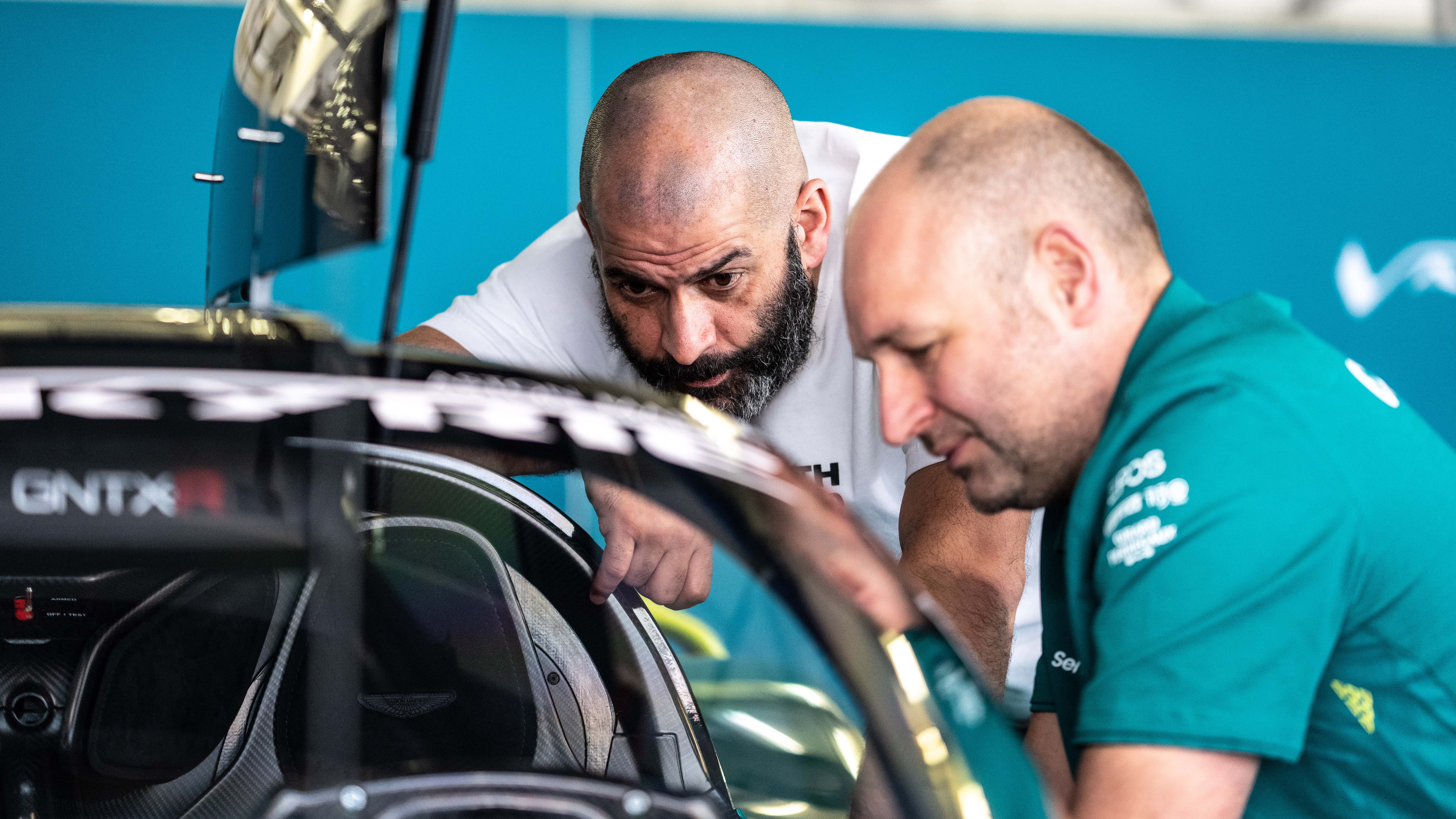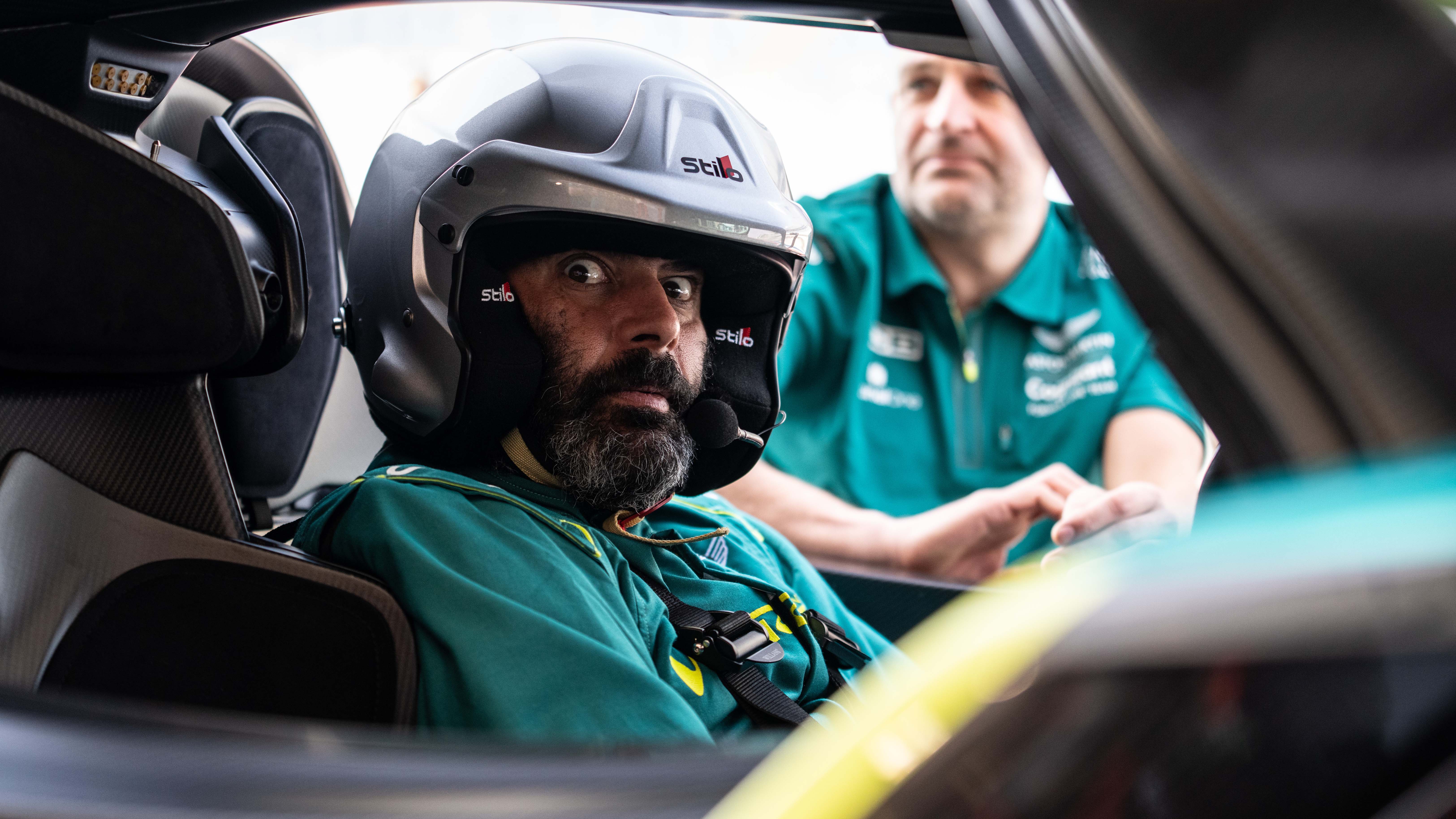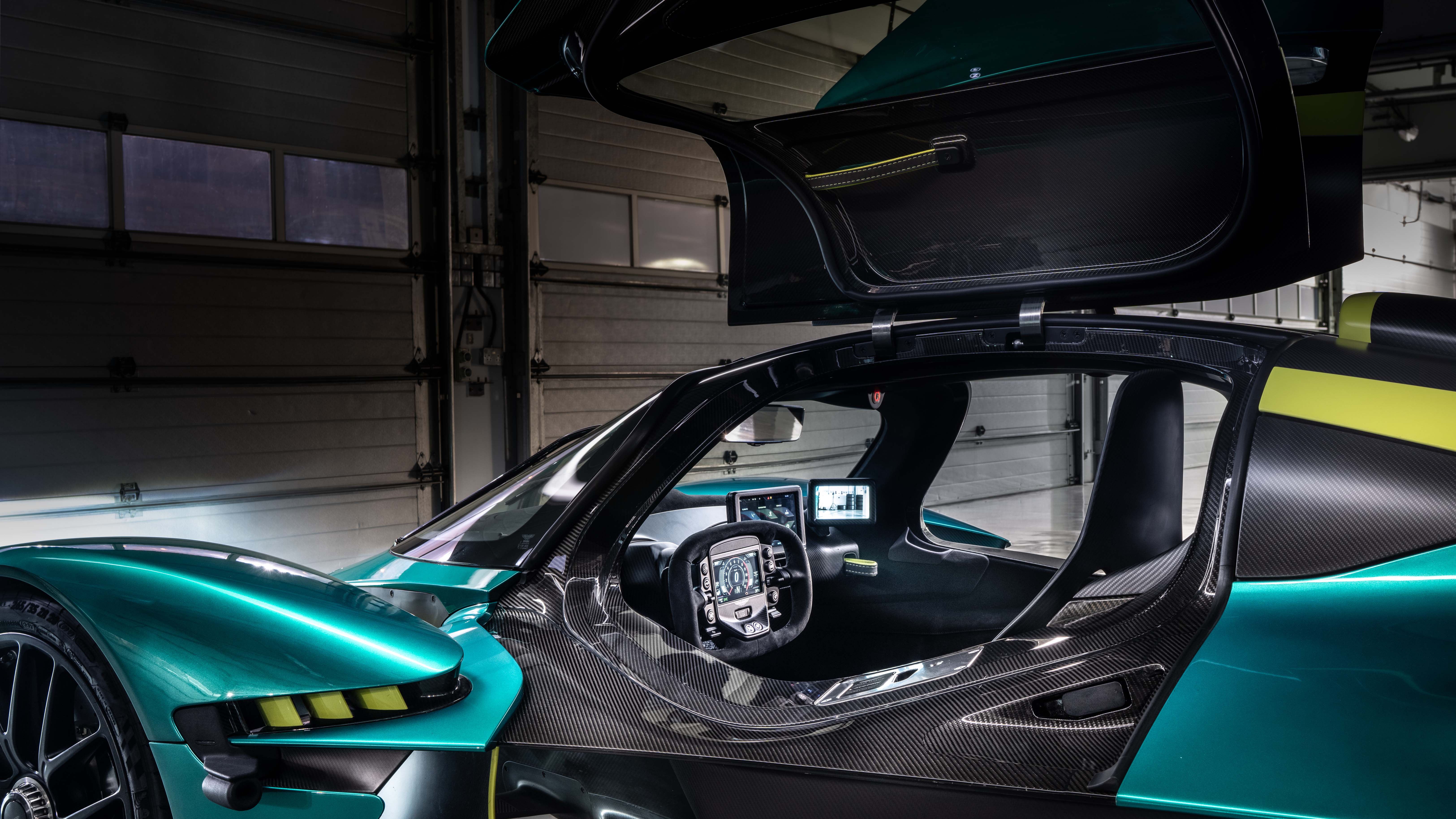
Aston Martin Valkyrie on track: Chris Harris drives Aston’s bonkers V12 hypercar
Harris gets his hands on the 1,139bhp Valkyrie at Bahrain's F1 circuit. Strap in for his thoughts...
Not being a student of Wagner I have never really understood the meaning of the word Valkyrie, nor the etymological connection to the extraordinary looking vehicle you see before you now. Having driven it at Bahrain’s F1 circuit I was rather hoping that it would be some wildly idiosyncratic beast which turned out to be rather different to what people might have expected. Sadly the connection seems limited to it being an angry sounding word beginning, as is the Aston nomenclature, with a V. Because Valkyrie was actually the daughter of a god who protected some people. Art and cars rarely mix well.
Photography: Mark Fagelson
I feel in some danger of trotting out the standard hypercar tester’s handbook of excuses for this machine. It is monstrously late, hasn’t ended up being entirely faithful to the original offering and under most circumstances I don’t doubt a base Porsche 911 would allow its driver to travel faster. But the handbook insists that I ignore that rather fundamental fact. As we do for most hypercars because they are the chocolate fireguards of our world.
But doesn’t it look fantastic? A futuristic amalgam of sci-fi angles and negative spaces. You walk around it wondering what bizarreness you’ll see next. In some respects it could be argued that these cars are better left as static objects and maybe demonstrated by others so we can all hear them and see them scream past.
On the circuit the Valkyrie was initially very intimidating. I had already driven the AMR Pro (check that out by clicking these blue words) and this probably didn’t help. From the start the road car felt quite compromised and much heavier. The seating position is amusing for the first few minutes, and I love the way all the contact surfaces are lovingly trimmed. There’s an air of fighter pilot or Star Wars speeder about it as you slide down low and under the wheel. The view forwards is just about enough, the rest is typically woeful. A rear camera does help slightly.
I venture out on a set of new Michelin Cup 2s to get a feel for over 1,100bhp. As the spec sheet suggests, it bears no resemblance to the Pro. Even when cold the engine’s vibrations trace a different path through the carbon tub and into your body. The noise inside is impressive, but it’s mostly volume over quality which is disappointing. Like the Carrera GT, folk on the outside get a better deal.
Not much happens below 3,500rpm, then the V12 begins to push hard, the gnashing increases and at that point – as the afterburners hit – it becomes very difficult to see the wheel mounted speedometer because it is simply set too low. I don’t understand how a clean sheet car of this type has a steering wheel that won’t adjust high enough for most drivers.
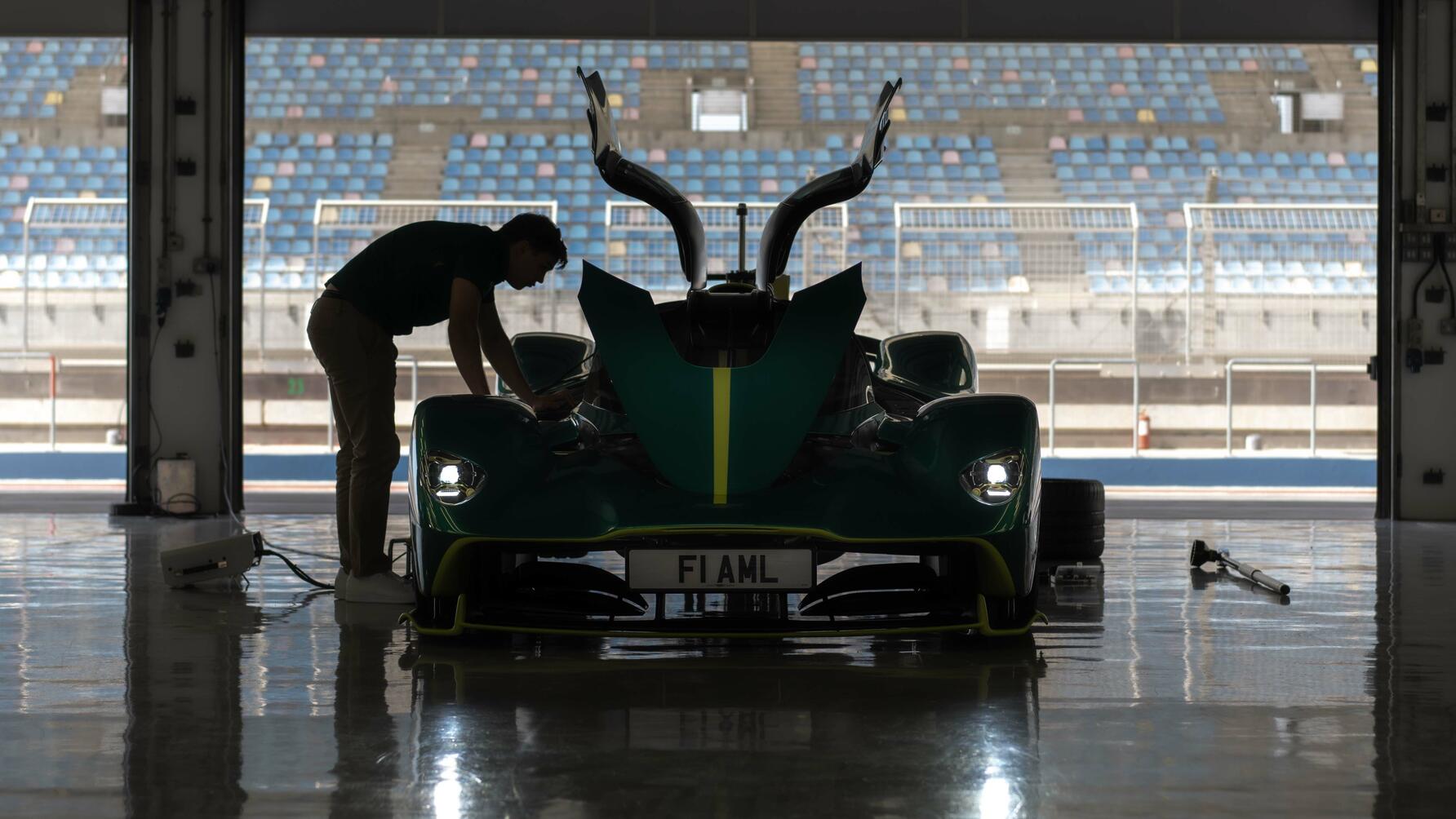
What happens next might compensate for that ergonomic faux pas. Because the Valkyrie piles on some big, big numbers – it’s ferociously fast and you have to keep looking down to ensure you don’t hit the 11,100rpm limiter. Into the first braking zone the left pedal is very long, but the feel is good and the graunching of ABS gubbins is reassuring when you’re casually hitting 210mph on the main straight.
But the gearshifts need discussing because they are just so slow on the way up. This frantic V12 masterpiece rushes to potential valve bounce and just when you want a whip-crack shift, the clutch disengages and slurs a shift so slow it actually interrupts your appreciation of the engine. I have to assume that’s to protect something in the powertrain, but whatever the reason, it kills some of the car’s potential theatre.
The handling on circuit I found quite difficult to decipher. Bahrain is always dusty off line, and the car wanted mostly to understeer. But there was a complete lack of traction and the damping was just odd – it felt like the clever hydraulic suspension was struggling to glean anything through the Cup 2’s sidewalls and just threw support at whichever corner it fancied. Something wasn’t right. A change to Cup 2Rs made a huge difference. Now I could push much deeper into braking zones and hold the racing line, but the steering is heavy and the car is physical to drive fast.
And it’s just so, so loud. Above 50mph there’s no point in attempting to talk to the poor sod wedged next to you. Any journey requires use of the in-built ear defenders.
If the gearbox limits the engine, then the tyre limits the Valkyrie’s chassis. I’m a little bemused by the vastly complicated hydraulic system that has allegedly been a large part of the reason the car was delayed. It’s designed to offer a range of ride height and damping options that conventional suspension simply can’t replicate. I can’t vouch for it on road, but on track it doesn’t give a great sense of connection and the car feels quite inert mid-corner because with the systems on, the throttle is killed too early. This isn’t a car to play with in a turn, partly because the steering wheel is such an odd shape I’m not sure it’s possible to correct a large slide. Moreover, this is the first very fast car that I haven’t even attempted to skid for the video camera. Read into that what you will. If only Aston could have developed a tyre especially for this car, maybe the chassis could have been more playful?
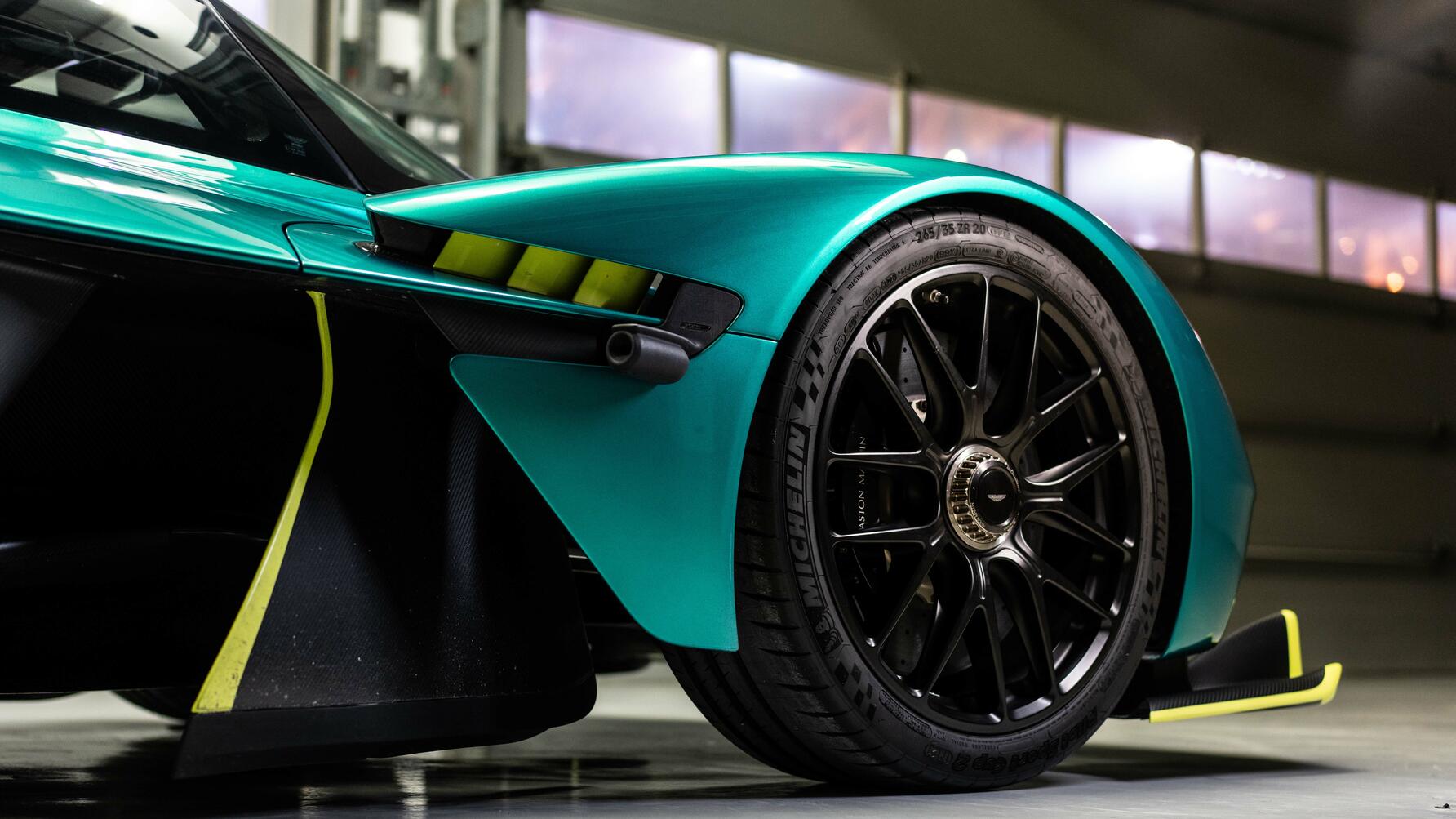
So where does that leave us? Seems I’ve written more negative things than positive, and that is a fair summary of the car I drove on the day. Dynamically, I expected more. Here’s what I now think about the Valkyrie after driving it. It’s potentially the greatest hypercar ever made, but it just isn’t finished. The electronic chassis systems are poorly calibrated, the gearbox is just too slow and the noise makes it unlikely that people will want to use it as a motor car. Those are all attributes of a mid-to-late stage development vehicle. If I was a customer, I’d find that deeply disappointing.
Top Gear
Newsletter
Thank you for subscribing to our newsletter. Look out for your regular round-up of news, reviews and offers in your inbox.
Get all the latest news, reviews and exclusives, direct to your inbox.
However, the car didn’t miss a beat in nearly two days of stop-start driving in a warm climate. The same couldn’t be said of the AMG One. The aesthetic package combined with the V12 are enough to elevate this car beyond anything else that has ever been sold before, and let’s face it, that’s how most owners will use their £2.5m investment. And the history of this type of machine is littered with compromised glory. In fact, arguably the daddy of them all – the McLaren F1 – was a a sensational engine in a chassis that probably needed some more development work. That the Valkyrie appears to have replicated exactly the same outcome almost 30 years later could be seen as a triumph or a failure.
Yes, I’m so glad it exists because one strongly suspects that it nearly didn’t. But I’m left frustrated with the knowledge that I know there’s a truly history changing vehicle just waiting to be unlocked from underneath that extraordinary bodywork.
Trending this week
- Car Review
BMW 1 Series




